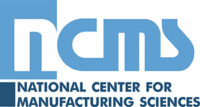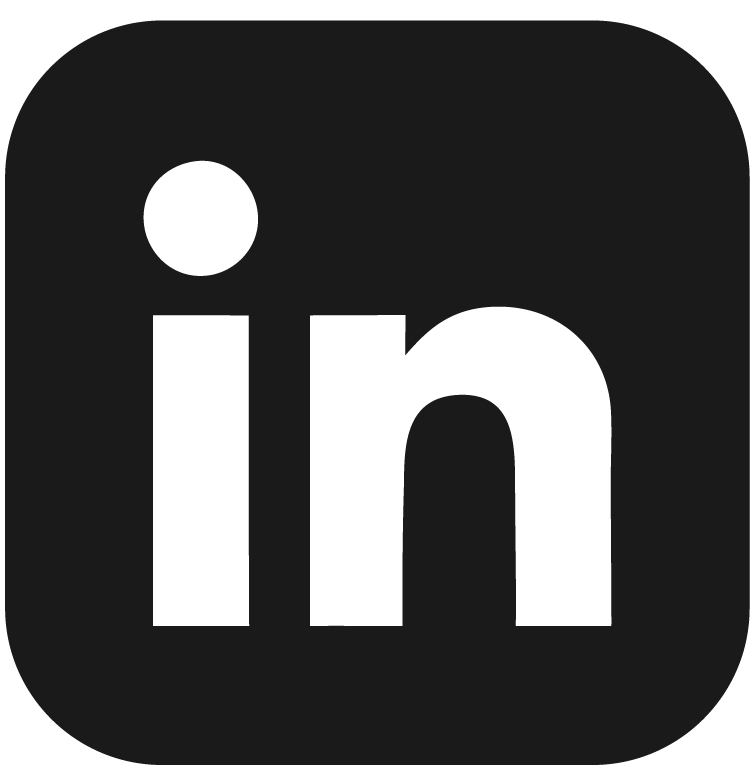NCMS Technology Briefs highlight NCMS’s cultivation and growth of innovative technologies. Through our management of government and industry collaborations, we’ve gained insights into novel approaches and best practices that can assist all companies to navigate the sometimes complex journey toward advancement. Based on the results of NCMS technology projects, the briefs show the applicability and usefulness of proven technical advances—all in an effort to speed adoption and eliminate duplication of effort. NCMS is pleased to share these insights to support U.S. manufacturing competitiveness.
Introduction
Maintenance, repair, and overhaul (MRO) services are an essential expense for any business that relies on high-value assets such as equipment and vehicles. MRO encompasses an array of functions that ensure the continuous upkeep of critical assets throughout their lifespan including periodic maintenance, unscheduled repairs, retrofits, and even complete rebuilds and overhauls. Accordingly, assets that are critical to business objectives, with high costs and extensive life cycles, are prime candidates for developing cost-saving strategies and streamlined MRO processes.
A primary challenge with sustaining readiness across the life cycles of high-value assets is that, as the units age, their manufacturers often stop providing the support needed to keep the assets running. Parts obsolescence occurs when obtaining replacement parts becomes problematic because original equipment manufacturers (OEMs) and aftermarket suppliers cease production of parts due to a lack of demand or the need to retool for newer models. Cost-conscious organizations rely on legacy, aging equipment to maintain productivity, and the unavailability of even a single asset due to a shortage of replacement parts can determine the difference between business success and failure.
Several recent NCMS initiatives have successfully solved parts obsolescence issues by using additive manufacturing. This Technology Brief outlines considerations for manufacturing companies regarding the use of additive manufacturing to produce replacement parts for legacy equipment, vehicles, and other high-value assets. The factors laid out here are intended to assist companies in determining the best course of action to obtain replacement parts, simplify and complete MRO with higher levels of success, increase equipment availability, and reduce maintenance costs.
Considerations for Replacing Obsolete Parts
To prepare for a time when an indispensable part becomes unavailable, business leaders, maintainers, and supply chain professionals must have alternative options in place before operations are affected. Every asset has a life cycle: acquisition, operation and maintenance, repair and replacement, and disposal. Best-in-class companies get out ahead of parts obsolescence issues by continuously assessing their supply chain and analyzing factors that may indicate a disruption in critical parts production. When legacy assets begin to break down, companies must perform a cost-benefit analysis to determine whether to repair or replace the item. An established standard that organizations should use to effectively manage assets is ISO 55000:2024 Asset management — Vocabulary, overview and principles, which equips organizations with the necessary practices to optimize asset usage, improve financial performance, manage risk, and ensure sustainability.
If an organization determines that repair is required for an asset, but the OEM no longer produces the needed parts, it still may be possible to purchase aftermarket parts. In finding quality parts, note that manufacturers of aftermarket parts are required to certify that the product complies with all applicable laws. Critical aviation assets require extensive documentation to validate necessary performance characteristics and quality processes. For vehicles, many aftermarket parts are regulated by the National Highway Traffic Safety Administration (NHTSA) based on safety needs. When considering any type of aftermarket parts, it is essential to find a reputable supplier and always ensure compatibility by cross-checking the part number against the machine’s make, model, and serial number.
If aftermarket parts are unavailable, another option is to hire an industry partner to produce the needed parts with advanced manufacturing techniques such as additive manufacturing. A common form of additive manufacturing is 3D printing, which creates three-dimensional objects from digital files. The use of 3D printing has the potential to solve parts obsolescence issues, provided that the 3D printed parts have protected the OEM’s intellectual property, meet necessary performance specifications, and are of high quality. Typically, this route makes the most sense when an organization has a fleet of legacy assets with ongoing MRO needs.
Considerations for 3D Printing Replacement Parts
When considering whether 3D printing a replacement part can be pursued, the first step is to determine whether the part is protected by any intellectual property rights and if those rights are still in effect. To search for existing patents, use the Patent Public Search tool on the US Patent and Trademark Office (USPTO) website. For copyrights, search the Copyright Public Records Portal on the Library of Congress website. For trademarks, search the trademark search system on the USPTO website. It is possible to search for general keywords.
If a part is protected by intellectual property rights, then the industry partner cannot use available technical data and must independently reverse engineer the part prior to producing it. NCMS highly recommends obtaining a thorough legal review prior to initiating reverse engineering activities and references such as Mil-Handbook 115 provide solid guidance. In the context of 3D printing, copyright issues often arise around digital files and models that serve as blueprints for printed objects. If an individual or company uses 3D printing to replicate a patented product or part without authorization, they could be infringing on the patent holder’s exclusive rights. Trademark issues may arise when printed items feature recognizable logos or brand identifiers.
To avoid these issues, it is necessary to find a 3D printing provider that has an agreement with the OEM to protect intellectual property or is expert in reverse engineering and its legality. For example, many automotive OEMs have signed agreements with 3D printing companies to produce legacy parts, as seen in partnerships like those between Ford and HP, Subaru and HP, and Toyota and Stratasys.
As highly sensitive product data travels between industrial companies, suppliers, and subcontractors, ensuring the security and integrity of intellectual property becomes a major challenge. To solve this challenge, NCMS has brought together collaborations between industry, government, and academia to ensure the integrity and traceability of the AM digital flow to prevent counterfeits, maliciously modified, poor quality, or uncertified parts from entering the physical supply chain.
A promising solution for securing IP protection in 3D printing is the use of blockchain to track, verify, and manage 3D designs. Blockchain’s decentralized nature provides a secure, transparent ledger that records ownership and usage rights, offering a solution for ensuring creators are credited and compensated for their work. Over the past decade, NCMS has launched several initiatives at the leading-edge of scaling up 3D printing and securing IP protection through blockchain.
A NCMS initiative successfully used blockchain to protect the integrity and securely track the provenance of technical data packages (TDP) for distributed AM. This effort demonstrated the capabilities of industry partner Moog’s VeriPart®, which utilizes a secure, trusted, supply chain marketplace—VeriChain™—powered by blockchain technology. VeriPart® end items are guaranteed authentic and hold traceable certification pedigrees for all requirements, intellectual property, processes, and materials used to produce them. This project successfully printed one polymer and one metal part. VeriPart® confirmed that the digital asset was not manipulated, the source was valid, only the permitted quantity was made, and intellectual property ownership was protected. Additionally, parts produced via additive manufacturing massively reduced lead-times, taking the original part lead-times from months to hours.
Ensuring Quality Control for Replacement Parts Created with Additive Manufacturing
Generally, if a part is not protected by any intellectual property rights, then the part can be 3D printed, with some restrictions. For example, federal law prohibits the 3D printing of firearms. For companies needing replacement parts that are not available through the OEM, and not protected by any intellectual property rights, then contracting a supplier to 3D print replacement parts might be a good option. Third-party suppliers may offer a cost advantage to produce low-volume spare parts. Additionally, the third-party manufacturers could be geographically closer, offering a reduced logistics footprint with potential second order effects such as reducing inventory, warehousing, and distribution costs.
NCMS is at the forefront of ensuring quality control for additively manufactured parts. An NCMS collaboration expanded the use of ADDiTEC’s ElemX, a liquid metal printer that uses aluminum alloy wire, which is both inexpensive and corrosion resistant. This technology is safer, more transportable, and more cost-effective than using custom metal powders and does not require facility modifications or personal protective equipment. The ElemX printer requires minimal post-processing and provides a faster print-to-part production timeline. The technology is best suited for small- to moderate-sized parts. An NCMS collaboration with ADDiTEC and the Naval Postgraduate School (NPS) successfully implemented AM on a Naval vessel to improve readiness. The ElemX printer can be used by manufacturing companies for spares, repairs, and low-volume production parts, offering a faster time-to-part.
Another NCMS collaboration between multiple industry and government partners additively manufactured components from problematic castings that have limited or extinct sourcing within the US. Specifically, the initiative additively manufactured multiple parts used in titanium gate valves, which are fluid control devices used in naval assets and in other industries such as petrochemical, agriculture, and industrial processing. The initiative also investigated and documented material property data for the AM-fabricated components, in particular the fatigue properties that are of critical importance for system safety. Additionally, the initiative established common standards and formats to qualify and certify large metal AM parts for use in equipment and products across commercial and military sectors to ensure safety, reliability, and cost-effectiveness.
Some best practices that NCMS learned from this initiative that manufacturing companies can use when looking for additive manufacturing industry partners include:
- For additively manufacturing large metal components, seek an industry partner with wire-arc directed energy deposition (DED) capabilities. Wire-arc DED is a process where metal wires are melted during deposition using focused thermal energy from gas metal arc welding (GMAW), gas tungsten arc welding, or plasma arc welding (PA). The arc-welded layers are deposited on top of one another to form three dimensional parts. Widely utilized in the defense, aerospace, and energy industries, wire-arc DED is the best-suited process to produce large metal pieces because the process has high deposition rates, and less feed material is required to complete the print in comparison with other AM methods such as powder bed fusion.
- Find a company with advanced microscopy and modeling capabilities in order to understand the atomic arrangements of legacy components. Understanding the atomic structure provides insights into corrosion performance, mechanical properties, and potential failure mechanisms.
- Ensure the industry partner has the capability to create a technical data package describing material properties, the AM methods used, and potential applications for additional transition demonstrations.
Another NCMS initiative successfully solved parts obsolescence challenges for a widely used type of equipment: a rough terrain forklift with a lifting capacity of 4,500 pounds. Each unit can cost up to $50,000, so most organizations will aim to extend their life cycles as long as possible. Due to large loads and heavy usage, forklifts require a reliable supply of spare parts to ensure equipment availability for the numerous industries in which they are mission critical.
To ensure quality control for legacy parts produced with 3D printing, it is important to find a supplier with 3D laser scanning and reverse engineering capabilities. If an asset lacks a technical data package, it is important to produce an up-to-date Bill of Materials (BOM). The NCMS initiative established a new BOM as a central record of all materials, components, and processes required to maintain a legacy forklift. It is important to design the BOM so that it can be filtered to display obsolete parts.
In addition, it is critical that parts produced via AM follow standards and detailed process work instructions to ensure consistency, repeatability, and reliability. Major governing bodies have established increasingly stringent sets of testing protocols and certification steps including:
- ISO/ASTM Additive Manufacturing Technology standards
- National Institute of Standards and Technology (NIST) Additive Manufacturing Standards and Benchmarks
While companies are not required to follow these standards, adherence to these standards is highly recommended and increasingly important for quality, safety, and industry recognition.
When selecting a company to additively manufacture replacement parts, it is also important to ensure that they follow standard risk management procedures. For example, the NCMS forklift MRO initiative created a risk register—an invaluable tool that enables teams to collectively identify, analyze, and solve risks before they become problems.
Benefits of Additive Manufacturing for the Manufacturing Sector
The processes outlined in this Technology Brief will help guide companies to determine how to:
- Identify parts obsolescence issues
- Leverage digital engineering to achieve design flexibility, reduce user error, minimize material waste, and establish unmatched traceability for documentation purposes
- Utilize digital engineering to accelerate reverse engineering and AM of critical parts
- Use AM to fabricate parts quickly and on demand
- Ensure the reliability of critical parts created with AM
- Integrate AM into existing supply chain distributions to establish a more efficient and responsive supply chain, reduce the risk of part obsolescence, lower costs, and enable economies of scale
- Successfully complete MRO to extend asset longevity, operational efficiency, reliability, and operator safety
NCMS Projects
- Adapting Blockchain Technology for Additive Manufacturing (AM)
- Advancing Metal Additive Manufacturing to Meet Naval Sustainment and Maintenance Needs
- Metal AM Parts Produced to Meet DOD Qualifications and Certification Standards
- Advanced Tools and Methods to Improve Material Equipment and Handling Overhaul
About NCMS
The National Center for Manufacturing Sciences (NCMS) is a cross-industry technology development consortium, dedicated to improving the competitiveness and strength of the US industrial base. As a member-based organization, it leverages its network of industry, government, and academic partners to develop, demonstrate, and transition innovative technologies efficiently, with less risk and lower cost.
NCMS enables world-class member companies to work effectively with other members on new opportunities—bringing together highly capable companies with providers and end users who need their innovations and technology solutions. NCMS members benefit from an accelerated progression of idea creation through execution.




